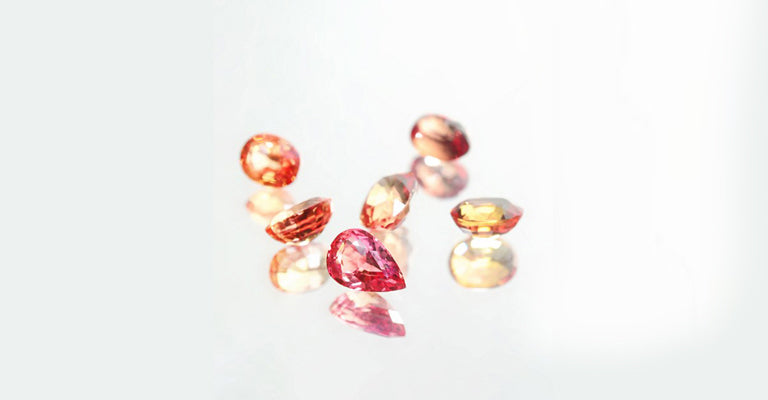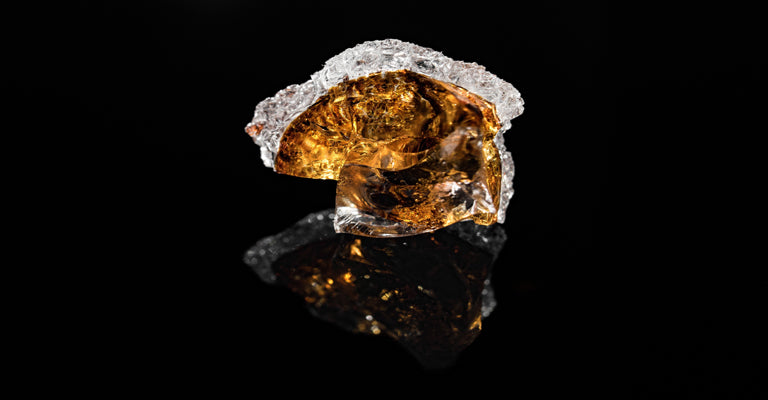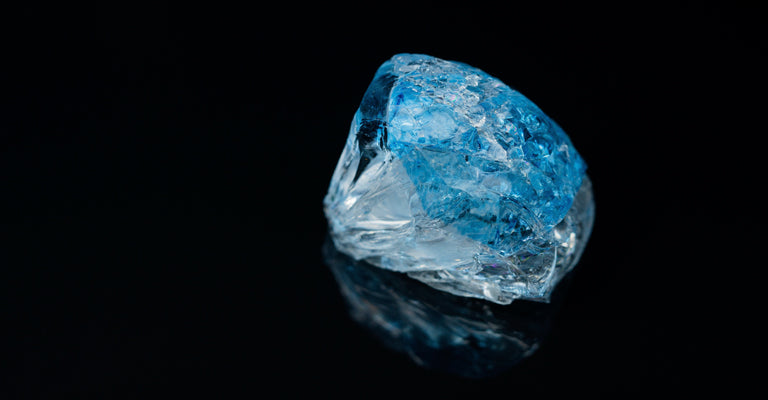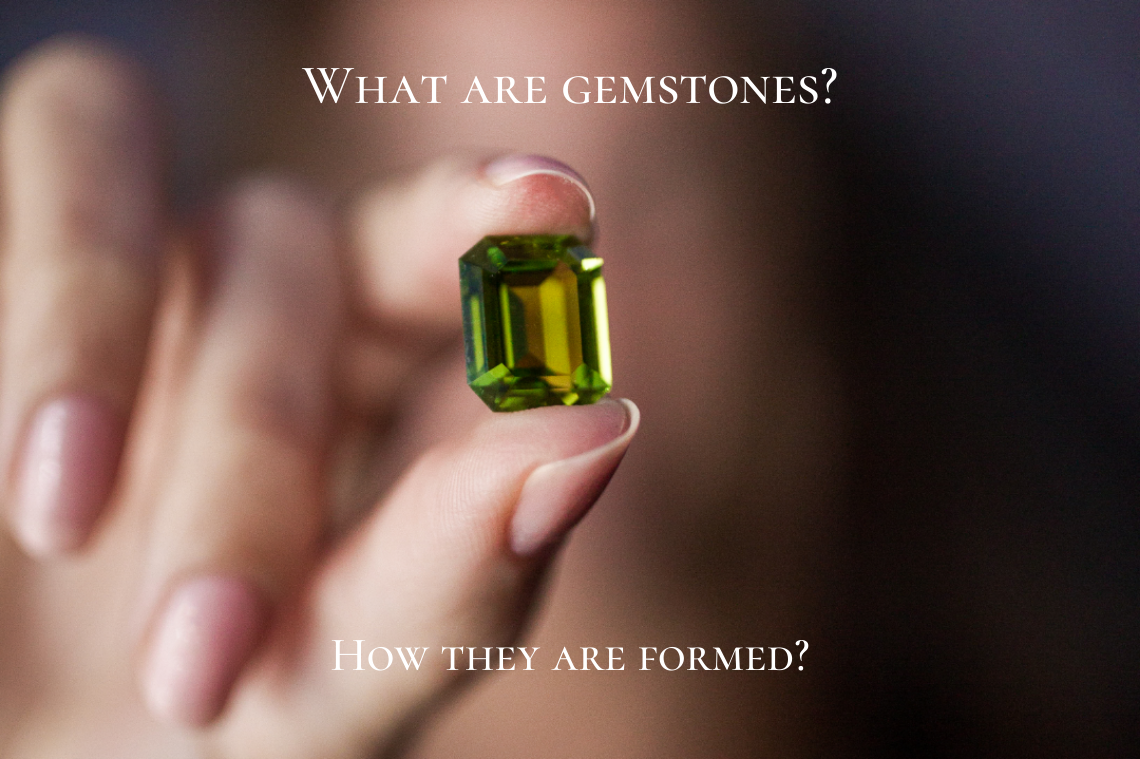Precious things in life are not found in an easy way. The more something is rare, the more it is harder to get. Likewise, gemstones are the hidden treasures that are hard to find. Even if they are not found aplenty, people are seemingly over- ambitious in finding them because there are some qualities in gemstones that benefit us in an amazing way. They have been treasured and prized around the world since ancient times.
What are Gemstones?

Most gemstones are minerals, mineral aggregates, and sometimes rocks. For some gemstones, it is the beauty of the color which makes it special, it may be the optical character, the geographical region. For others, it may be the hardness, stability, or some inclusion which makes it rare to found. So for a mineral to be classified as a gem, a mineral must be beautiful, durable, and rare.
How gemstones are formed?

Earth’s crust (the top layer of the Earth) is abode to majority of the gemstones, which has a depth of approximately 5 to 40 km. Some gemstones sit deeper and this hidden treasure is found as far as up to 100 km or even more. It takes ingredient, temperature, pressure, atmosphere, time and space to form natural stones.
Inside the earth, the ingredient of crystals are complex and numerous. And solution may contain many different minerals. At a high temperature, a solution can hold many minerals in suspension. As the temperature drops, the amount of solid ingredients can hold suspension drops as well. At that time, crystal forms.
In fact, different minerals in the same solution can crystallize at different temperatures. For example, Corundum might crystallize first, followed by Topaz and Quartz, as the solution continues with the heating process. It takes proper combination of pressure and temperature for minerals to crystallize. The gems that crystallize underground typically require very high pressure and temperature.
Time and space are the two conditions required for crystallization. With the correct ingredient combination, pressure and heat must last long enough for the minerals to crystallize. Additionally, it also depends upon how the rocks are cooled. For example, in igneous rocks, large crystals indicate slow cooling, while small crystals indicate fast cooling.
Two of the most widespread found igneous rocks are basalt and granite. Basalt is rich in iron and magnesium. Many gems like sapphire, ruby, peridot are formed in basalt rich rocks. While granite is rich in silicon, oxygen, and aluminum and it produces tourmaline, topaz, spodumene.

A gemstone is formed after having undergone immense pressure of the craggy rocks, borne the heat in the Earth’s mantle, and crystallization of the rocks. The depths of the Earth bear the secrets to these glistening stones. These spell the secrets to powers unknown and shades of magical sprinkles. Precious stones such as Ruby, Sapphire, Diamond, and Peridot are brought from the greater depths of the Earth. These are believed to have been formed during volcanic eruptions years ago.
Quartz is one such crystallized mineral which is found commonly in the deep rocks. It is imbued with exotic properties, formed at greater lengths of the Earth’s surface. Fabulous emerald comes from Muzo mines in Columbia. They are formed by super saturated water with many different minerals. When these minerals cool down, they begin to crystallize. These deposits are rich with chromium which gives Emerald the incredible color. These depths lend unique qualities to the gemstones and contribute to their aesthetic beauty.
Every gem has its different ways of formation. Here, we will go through few of them:
Igneous: The process of Igneous involves solidification of magma under the Earth’s mantle. It formation starts in a molten or semi-molten state and become solid when it cools. Two of the most widespread found igneous rocks are basalt and granite.
Basalt is rich in iron and magnesium. Basalt can carry gems like corundum, peridot to the surface. While granite is rich in silicon, oxygen, and aluminum and it produces tourmaline, topaz, spodumene. It requires extremes temperatures to form the minerals such as Diamonds, Peridot, Chrysoberyl, Corundum, Quartz (including Amethyst, Ametrine, Citrine), Tanzanite, Tourmaline, Topaz, Moonstone, Garnet, Beryl (Emerald and Aquamarine), Zircon, Spinel, Feldspar etc. During the volcanic eruption, erosion and mountain building, they are brought to the surface.
Sedimentary: When the mineral on the earth surface mix with water (and wind), the mineral rich water seeps down between the cracks and cavities of the earth and deposits layers of minerals, which leads to the formation of sedimentary rocks such as Jasper, Malachite, Opal. Eventually, over millions of years, sediments accumulate in thick layers, and the pressure from above hardens them into rocks. These rocks are produced from the weathered products of existing rocks.

Metamorphic: as the name suggests, these are gems that are “morphed” due to intense heat and pressure of the pre- existing rocks i.e. Igneous and Sedimentary. As long as the right conditions exists, ruby, sapphire, garnet can be produced by changes in temperature and pressure. Marble is limestone, that has been altered by heat and pressure with times. If the limestone contains aluminum, ruby and spinel might form during metamorphism. Geologists believe that rubies origin in Myanmar (Burmese Ruby) and Vietnamese rubies are formed in metamorphic rocks.
Majority of the gemstones are formed by metamorphism including Jade, Lapis Lazuli, Sapphire, Ruby, Spinel, Garnet, Turquoise, Beryl and Zircon.
Hydrothermal: The process of hydrothermal involves water and heat. As water percolates through the earth with variety of minerals, compounds, gases and meets with magma, it becomes super saturated and then it pushed into cavities and crack in the earth. These superheated solutions can dissolve and transport a wide variety of chemicals that are suitable for gem formation. These mineral rich fluids begin to cools down and crystallize.
Hydrothermal fluids carry rare elements like beryllium, boron, and if conditions are correct they form gems like emeralds, topaz, amethyst. The Columbian emerald found in Muzo mines are produced through this process.
Thus, the formation of gemstones is a beautiful natural process yet it takes millions of years. Nature takes time to let them crystallize, and embrace all the hues, and they tend to bear immense pressure so as to turn into the precious stones that they are.
Best natural gemstones at Gemkart:
We, at Gemkart, understand your requirements and needs. We endeavor to bring the best quality and rare natural gemstones for your perfect fit. Going deeper into the depths of the Earth and exploring the unexplored, we offer a wide range of natural gemstones. The quality of the gemstones is top notch and uncompromised. The incomparable price is an attraction, to match the quality.
Do remember, natural gemstones are rare and you have to go much deeper to cherish the treasure!














TuLSRDcNjApP
Very nice and very good information about the Gemstones.
This information will realy help the consumers before they buy natural gemstone.
Thanks